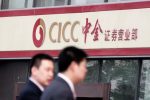What is convertible preferred stock?
Convertible preferred stock is preferred stock that the holder may elect to convert into a fixed number of common shares after a predetermined date。
Most convertible preferred stock is exchangeable at the request of shareholders,But sometimes there is a provision that allows a company or issuer to force conversion。The value of convertible preferred stock ultimately depends on the performance of the company's common stock。
Main points
- Convertible preferred stock is a dividend-paying preferred stock,Can be converted into common stock after a specified date at a fixed conversion ratio。
- Convertible preferred stock is a hybrid security that has characteristics of both debt and equity。
- If the common stock trades above the conversion price,Preferred stockholders may find it worthwhile to convert their shares into common stock。
- Preferred shareholders who convert their shares give up the rights of preferred shareholders (no fixed dividends or higher claims on assets),Become an ordinary shareholder (with voting rights and the ability to participate in stock price appreciation)。
Learn about convertible preferred stock
Companies use convertible preferred stock to raise capital。These securities are particularly useful as a financing vehicle for early-stage companies,Because they can provide investors with greater flexibility,making it an attractive option。That is, investors have the promise of regular dividends and the potential for future stock price appreciation.。
Preferred stock is a type of equity capital issued by a company,Higher asset and income requirements than common stocks。Preferred stocks typically pay a steady dividend,Dividends on common stock will only be paid if approved by the board of directors based on the company's recent financial performance.。
Preferred shares generally do not have voting rights like common shares。therefore,Preferred stock is often thought of as a hybrid of corporate bonds and common stock。
Convertible options
The characteristic of convertible preferred stock is that it contains embedded options,Allows the holder to trade them for a specified number of common shares at some time in the future。This conversion option offers holders potential upside,Because the value of common stock may increase over time。at the same time,It also has the advantages of preferred shares。
However,This advantage comes at a price。Convertible preferred stock generally trades at a higher price than common preferred stock,And the dividend yield may also be relatively low。
Convertible Preferred Stock Terms
Terms commonly used when referring to convertible preferred stock are as follows:
- face value:par value of preferred stock,or the dollar amount payable to holders in the event of bankruptcy。
- conversion ratio:The number of common shares an investor receives upon conversion of convertible preferred stock。The ratio is set by the company when it issues convertible preferred stock。
- conversion price:The price at which convertible preferred stock can be converted into common stock。The conversion price can be calculated by dividing the par value of the convertible preferred stock by the stated conversion ratio.。
- conversion premium:The dollar amount by which the market price of convertible preferred stock exceeds the current market value of the common stock into which it is convertible. It may also be expressed as a percentage of the market price of convertible preferred stock.。
Example of Convertible Preferred Stock
Consider the hypothetical company ABC Inc. Convertible Preferred Stock Issued,The price is 1,000 Dollar,conversion rate 10,The fixed dividend is 5%。therefore,The conversion price is 100 Dollar,and ABC's common stock must trade above this threshold,It’s worth it for investors to make the switch。Even though the common stock is trading close to 100 Dollar,Also probably not worth converting,Because preferred shareholders will give up 5% fixed dividends and a higher claim on the company's assets in the event of liquidation。
If the convertible preferred stock trades at 1,000 Dollar,ABC common stock trades at 80 Dollar,Then the conversion premium will be 200 U.S. dollars (i.e. (1,000 – ($80 × 10)) or 20% ($200 ÷ 1,000 Dollar)。The stock price rose to 90 Dollar,Conversion premium shrinks to 100 Dollar,Right now 10%。
therefore,Conversion premium affects the trading price of convertible preferred shares in the market。
A high conversion premium means the underlying common stock trades at a much lower price than the conversion price,And the likelihood of profitable conversion is slim。in this case,Convertible preferred stock will be more like bonds,and are susceptible to changes in interest rates。
If the conversion premium is very low (meaning the common stock is trading very close to the conversion price),Convertible preferred stock will be sensitive to changes in the underlying common stock (in this case, ABC's common stock),and will operate fairly like straight common stock。
As common stock prices rise,Conversion becomes more attractive。If ABC common stock rises to 110 Dollar,Then each preferred share holder will 1,000 U.S. dollars of preferred stock available 1,100 USD (110 USD × 10)。If investors 110 Convert and sell common stock at U.S. dollar price,then you can get 10% income。
Switching Risks
The danger of switching is,The investor then becomes a common shareholder,and are affected by stock price fluctuations。
If the price of ABC stock falls to 75 Dollar,and investors continue to hold common stock,Then they will now pay for each share of preferred stock they previously owned (value 1,000 USD) held 750 U.S. dollars ($75 × 10) of common stock。
This means that the nominal loss is 250 Dollar,Investors no longer receive 5% preferred stock dividends or preferential claims on assets。
What is the difference between convertible preferred stock and common preferred stock?
Convertible preferred stock gives its holder the option to convert it into a certain number of common shares in the future。In addition to the guaranteed benefit of regular dividends,This also provides shareholders with the potential benefit of capital appreciation。
therefore,Convertible preferred stock typically trades at a relative premium,and provide a lower dividend rate than ordinary preferred stocks。
What is the difference between convertible preferred stock and convertible bonds?
Both convertible preferred stock and convertible bonds can be converted into common stock,But they differ in several key ways。
Convertible bonds are like any bond,It's all debt。This gives owners of convertible preferred bonds priority over owners of convertible preferred stock in the event of bankruptcy or liquidation.。(Both have priority over common stock holders。)
Convertible preferred stock typically pays a fixed cash dividend out of the company's retained earnings.。Convertible bonds pay coupon rate,This is the interest paid periodically。
at last,Most convertible bonds have a specified maturity date,As long as the company continues to operate,Convertible preferred stock can exist。
Why should investors buy convertible preferred stock?
Convertible preferred stock provides investors with the benefits of preferred stock and common stock。Investors gain the stability of preferred shares、Liquidation preferences and higher dividends,But if they think the price will go up,They may also choose to convert their shares into common shares。
This conversion feature can generate potentially higher investment returns than investors would receive with traditional preferred shares,while also providing flexibility not possible with preferred stocks or bonds.。
Summarize
Convertible preferred stock combines the characteristics of preferred stock and common stock,is a hybrid security,Have stability、Fixed dividends and the potential for capital appreciation through conversion。
Investors in this type of security value its flexibility。conversion price,or the number of common shares suitable for one share of convertible preferred stock,To be determined at the time of release,and may be subsequently adjusted by the issuer。



